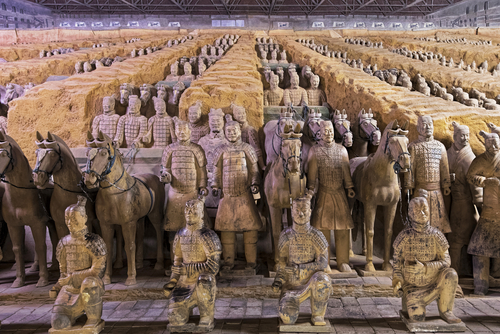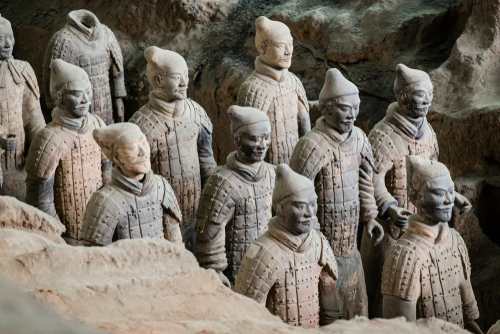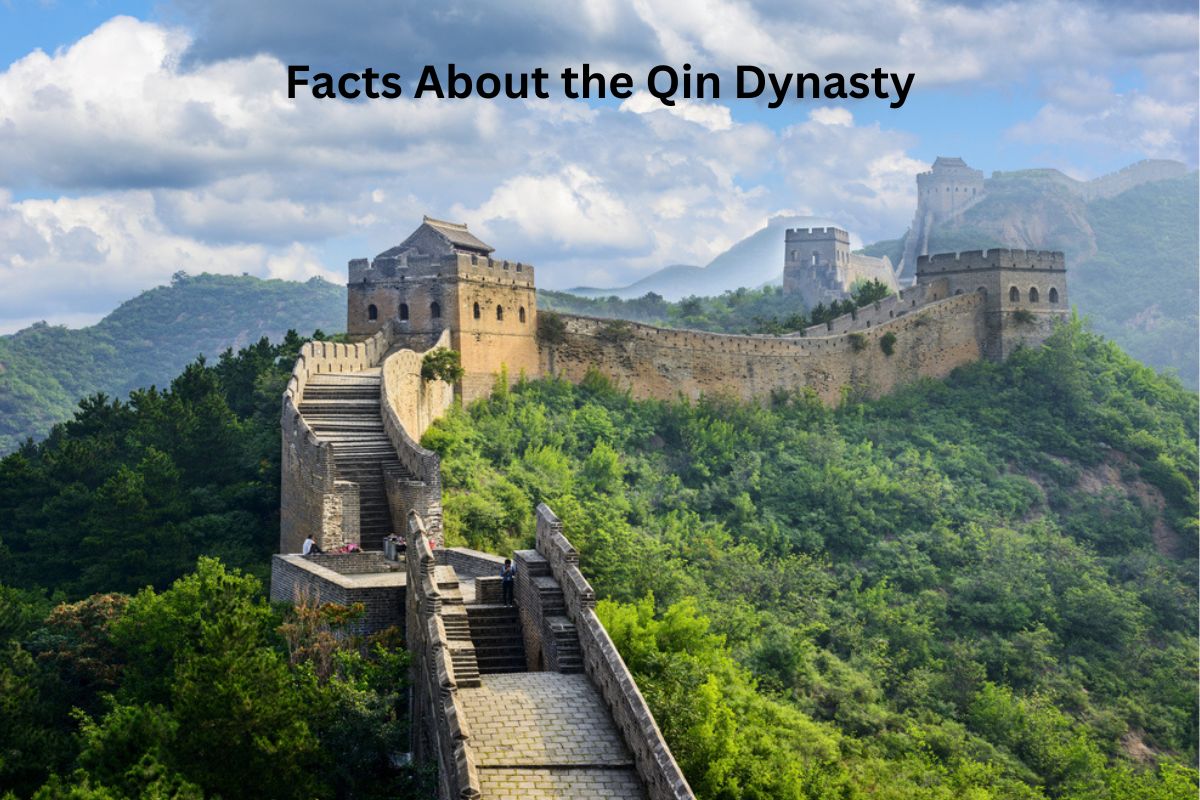The Qin Dynasty was a transformative era in ancient Chinese history, marked by the visionary leadership of Emperor Qin Shi Huang.
Established in 221 BC, this dynasty achieved unprecedented feats, including the unification of warring states, the construction of the Great Wall, and standardization efforts that enhanced governance and culture.
However, the dynasty’s reliance on Legalism and harsh policies led to both remarkable accomplishments and its relatively short 15-year existence.
The fall of the Qin Dynasty set the stage for the rise of the influential Han Dynasty, shaping the course of Chinese civilization for centuries to come.
Qin Dynasty Facts
1. Founded in 221 BC by Qin Shi Huang
The Qin Dynasty was established by Ying Zheng, who later assumed the title of Qin Shi Huang, which translates to “First Emperor of Qin.” Prior to becoming emperor, Ying Zheng was the King of Qin, one of the many warring states in ancient China.
Also Read: Zhou Dynasty Timeline
Through strategic military campaigns and diplomatic alliances, he successfully conquered and unified the other six major states, paving the way for the first centralized and unified Chinese empire.

2. Centralized governance and bureaucracy
Qin Shi Huang introduced a highly centralized system of governance, marking a significant departure from the feudal system that was prevalent during the Warring States Period.
Also Read: Accomplishments of the Qin Dynasty
He divided the empire into administrative regions, each governed by appointed officials known as “prefects.” These officials were responsible for implementing the emperor’s policies, collecting taxes, and ensuring law and order in their respective regions.
The centralization of power allowed Qin Shi Huang to exercise greater control over the vast territory, leading to increased efficiency in administration and policy enforcement.
3. Constructed the Great Wall of China
One of the most enduring symbols of ancient China, the construction of the Great Wall began during the Qin Dynasty. Prior to Qin Shi Huang’s reign, various smaller walls were built by different states as a defense against raids by nomadic tribes from the north.
To bolster defense against these incursions, Qin Shi Huang initiated the ambitious project of connecting and extending these walls.
The Great Wall of China, as it stands today, is a result of numerous later expansions and reconstructions, but its origins can be traced back to Qin’s efforts to create a continuous barrier to protect the Chinese heartland from northern invaders.
4. Standardized weights, measures, and writing system
Qin Shi Huang recognized the importance of standardization in maintaining a unified empire. To promote administrative efficiency and facilitate communication, he ordered the standardization of various aspects of society. This included unifying the system of weights and measures, ensuring consistency in trade and commerce.
Additionally, the emperor mandated the use of a single writing system known as “Small Seal Script” across the empire. This standardized script helped improve literacy and communication throughout the diverse regions of China, further enhancing cultural unity.
5. The Terracotta Army near the emperor’s tomb
One of the most astounding archaeological discoveries in history occurred in 1974 when farmers digging a well near Xi’an, China, stumbled upon an incredible find – the Terracotta Army. The vast underground collection consists of thousands of life-sized clay soldiers, horses, chariots, and even weapons.
Also Read: Terracotta Army Facts
These figures were created to guard the tomb of Qin Shi Huang in the afterlife. The discovery offered unprecedented insights into the artistic, military, and cultural achievements of the Qin Dynasty and has become a UNESCO World Heritage Site.

6. Influenced by the philosophy of Legalism
The policies of the Qin Dynasty were heavily influenced by the philosophy of Legalism. Legalism, a school of thought that emerged during the Warring States Period, advocated for strict rule, centralized power, and a strong legal framework to maintain social order and control over the populace.
Qin Shi Huang embraced Legalist principles and implemented strict laws and harsh punishments to discourage dissent and maintain absolute authority.
This approach also aimed to weaken the influence of Confucianism and other philosophical schools that might challenge the emperor’s supremacy.
7. Ordered the burning of books and burying of scholars
Qin Shi Huang’s regime followed a policy of intellectual suppression to consolidate his authority. In 213 BC, he issued an edict to burn all books that weren’t related to practical matters, such as agriculture, medicine, and divination.
This act aimed to eradicate historical records, philosophical texts, and alternative ideologies that might challenge the legitimacy of his rule. Additionally, he ordered the execution of many scholars and intellectuals who resisted or criticized his policies, further tightening his grip on power.
8. Invested in infrastructure development
Qin Shi Huang recognized the strategic importance of infrastructure in strengthening and unifying his vast empire. His administration invested heavily in road construction, enhancing communication and trade between different regions.
Moreover, a massive project called the Lingqu Canal was undertaken to connect the Xiang and Li rivers, linking the Yangtze and Pearl River systems. The canal facilitated transportation of goods and further promoted economic development.

9. Lasted only 15 years, from 221 BC to 206 BC
Despite its transformative policies and remarkable achievements, the Qin Dynasty was relatively short-lived. It lasted only 15 years from its establishment in 221 BC until the death of Qin Shi Huang in 210 BC. After his death, the dynasty faced internal turmoil and rebellions.
The subsequent reigns of Qin Er Shi and Ziying were marred by political instability, eventually leading to the fall of the dynasty in 206 BC.
10. Succession led to the rise of the Han Dynasty
The collapse of the Qin Dynasty paved the way for the emergence of the Han Dynasty. After the death of Qin Shi Huang, a power struggle ensued among his officials, generals, and nobles, leading to the dissolution of the centralized rule.
Liu Bang, a prominent military leader, emerged victorious in the conflict and established the Han Dynasty in 206 BC. Under the Han Dynasty, China experienced another period of centralization, cultural flourishing, and stability, making it one of the most influential dynasties in Chinese history.
